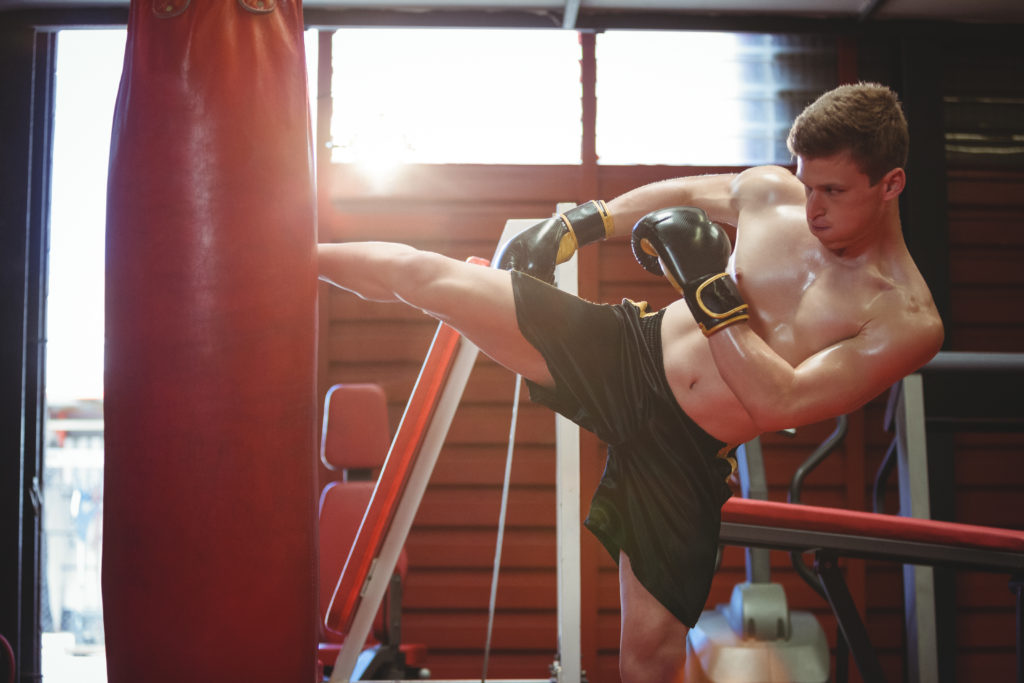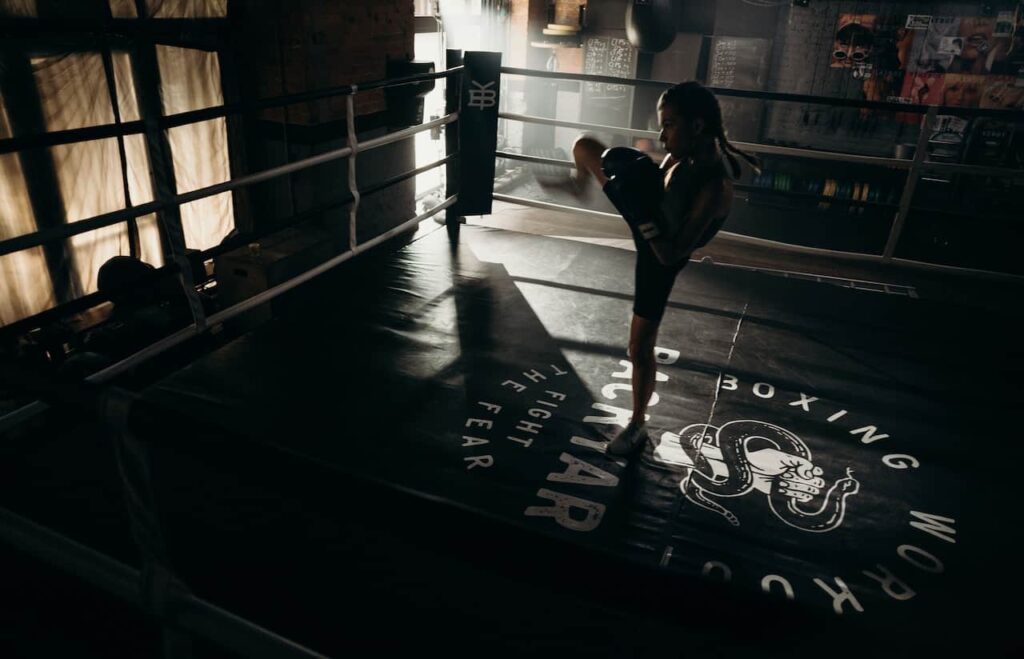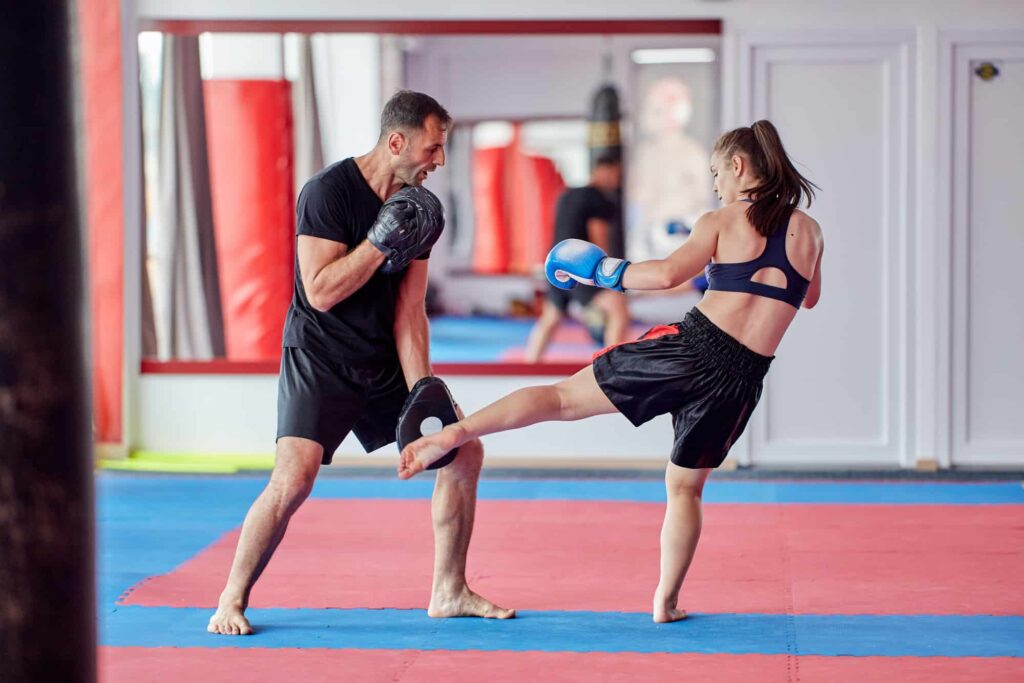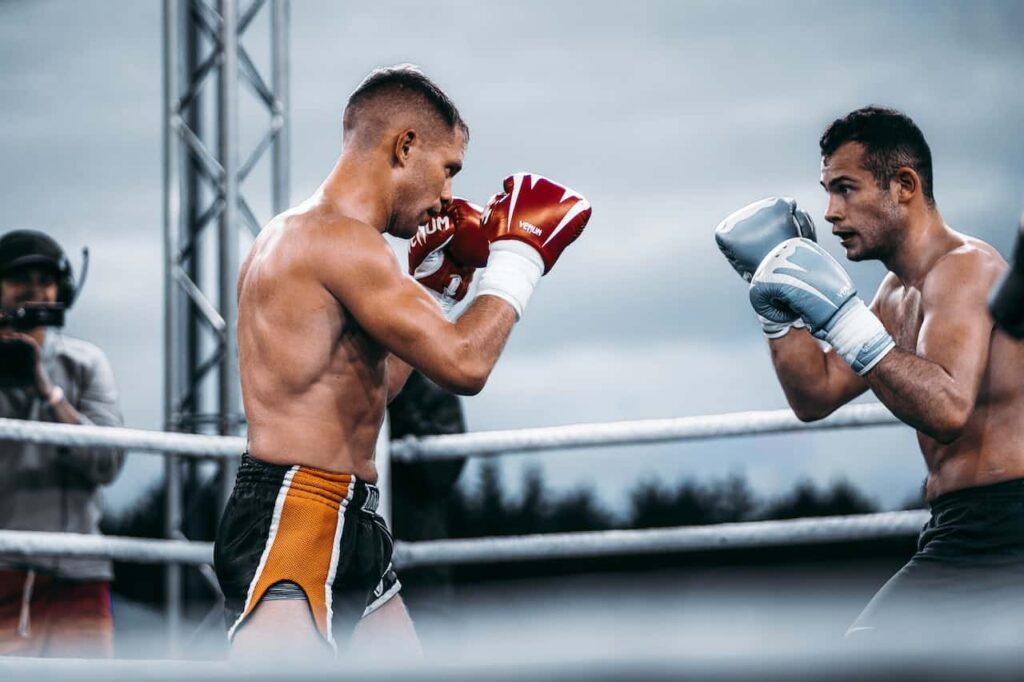Japanese kickboxing is seen as the original kickboxing style. And indeed the term ‘kickboxing’ was first used by the founders of this style.
And while it is impossible to pinpoint the exact ‘creation’ of Japanese kickboxing, probably the most influential people in the creation of ‘kickboxing’ are:
- Osamu Noguchi (who basically conined the term ‘kickboxing)
- Kenji Kurosaki (a Kyokushin Karate fighter who developed ‘kickboxing’ by combining his Karate with Muay thai and Western boxing)
- Tatsuo Yamada (who studied muay thai in great detail and invited Thai fighters to his KArate dojo in Japan)
We will discuss more on these influential Japanese men in the creation of ‘kickboxing’
Below we will get more into the origins of Japanese Kickboxing which led to the first ever kickboxing gym (Mejiro Kickboxing Gym in Japan) and first use of the term ‘kickboxing’ in martial arts and combat sports.

We also get into why Japanese Kickboxing is likely the first ever style of kickboxing created, in terms of modern day combat sport kickboxing as we know and understand it today.
And how Kurosaki’s Mejiro Gym has influenced and impacted combat ports the world over from K-1, kickboxing to MMA.
So get ready for a deep dive into Japanese kickboxing history, origins and the creation of the term kickboxing.
Japanese Kickboxing comes from Karate
The origins of Japanese kickboxing come from Karate and the combination of Karate with Muay thai and Western boxing.
But how exactly did this combination of styles actually come about?
Martial arts and combat sports buffs and historians trace the origins of Japanese kickboxing to 1963/64 (the year is debated to this day, but it was either in 1963 or 1964) when Japanese Karateka faced Muay thai fighters at the world famous Lumpinee stadium in Bangkok Thailand.
And the man who put these fights together and who would eventually coin the term ‘kickboxing’ was boxing promoter Osamu Noguchi.
Osamu Noguchi – Creator of the word ‘Kickboxing’
The Karate vs Muay thai fights were put together and organised by Japanese Boxing promoter Osamu Noguchi (the man credited with coining the term ‘kickboxing’).
Noguchi was the first one to use the term ‘Kickboxing’ and he also established the first ever “Kickboxing Association” in 1966 in Japan.
Noguchi was interested in muay thai and saw its potential marketability as a combat sport in Japan.
But he first sought to have Japanese fighters have success and win fights against Thai fighters in order to better market the combat sport among the Japanese with local fighters.
This led to the the first Karate vs Muay thai fights in 1963 or 1964 (depending on which resource you referecne).
Noguchi, while a Boxing promoter, realised that Western style boxing would probably be outmatched easily by muay thai and instead sought to send Karate fighters to compete against the Thais in Bangkok.
Three Japanese Karateka fought at Lumpinee against Thai fighters with two of them losing and one win scored for KArate.
The 3 Japanese Karateka who travelled to compete against muay thai were Kenji Kurosaki, Akio Fujihara, Tadashi Nakamura.
Kenji Kurosaki – Founder Mejiro Kickboxing Gym
Although Kenji Kurosaki was to lose against his Thai opponent, Kurosaki become more interested in muay thai and learning the fighting style of the Thais to incorporate into his own journey as a martial artist.
This led to Kurosaki founding the world famous Mejiro Gym.
Most likely one of the first kickboxing gyms in the world.

Kurosaki’s vision was to create a training facility that would develop elite fighters in the disciplines of Muay Thai and kickboxing while promoting the values of discipline, respect, and sportsmanship.
Under Kurosaki’s guidance, Mejiro Gym became one of the most prestigious and respected gyms in Japan and has trained many world-class fighters.
Kurosaki’s training methods and coaching skills have been instrumental in shaping the careers of numerous champions who have competed in national and international kickboxing and Muay Thai competitions.
The Japanese Style of Kickboxing
Out of Kurosaki’s Mejiro gym, a wide range of fighters would come and probably Kurosaki’s best student – Toshio Fujiwara.
Mejiro and Fujiwara developed the cornerstones of Japanese kickboxing’s early style (and the foundation of Dutch style) as he began to focus more and more on boxing and low kicks.
Fujiwara would become the first non-Thai to win the Rajademnern title in 1978.
The Mejiro/Fujiwara style would then be taken on by Dutch kickboxing pioneer Jan Plas.

Plas would found the Mejiro Gym in Holland in the 1980s and the Japanese kickboxing style of Mejiro would be passed on to all of his students and spread throughout Holland.
This would be the origins of the now world known ‘Dutch style’.
The focus of the Mejiro Japanese kickboxing style was on high percentage, low risk techniques.
Western boxing in combination with low kicks allowed for less chance of kicks being grabbed and ended up being swept and onto your back on the floor.
This would then became the backbone of Japanese and Dutch Kickboxing in general.
Japanese Kickboxing & the Creation of Dutch Kickboxing
Out of the Mejiro gym in Japan, several influential fighters trained and fought including Jan Plas a Dutch fighter who would take his training and lessons from Kurosaki’s MEjiro gym and found the Mejiro Gym in HOlland in the 1980’s.
Under Jan Plas’s guidance, Mejiro Gym became a renowned training facility that attracted talented fighters and enthusiasts from around the world.
Plas’s expertise and coaching methods played a crucial role in developing fighters who achieved success in various international competitions.
Mejiro Gym has trained several notable fighters, including multiple-time K-1 World Grand Prix champion Peter Aerts, as well as other accomplished fighters such as Ramon Dekkers, Andre Mannaart, and Rob Kaman.
These fighters and others associated with Mejiro Gym contributed to the growth and popularity of kickboxing, both in the Netherlands and globally.
Jan Plas’s dedication and contributions to the sport have made Mejiro Gym an influential institution in the world of kickboxing, and it continues to train and produce successful fighters to this day.
Japanese Kickboxing & K-1
Japanese kickboxing is a broader term referring to the style of kickboxing originating in Japan, encompassing various organizations and rule sets.
K-1, on the other hand, specifically refers to the kickboxing organization and event format known for its aggressive fights and focus on stand-up striking.
Japanese kickboxing and K-1 are two different styles of kickboxing that originated in Japan.
While they share some similarities, there are distinct differences between them in terms of rules, fighting techniques, and organization.
K-1 Rules and Kickboxing Rules
Japanese kickboxing typically follows a rule set that allows a wide range of techniques, including punches, kicks, knee strikes, and elbow strikes.
It is often governed by organizations such as the Japan Kickboxing Association (JKA) or the International Kickboxing Federation (IKF).
The rules may vary slightly between different organizations but generally emphasize a balance between striking techniques.

K-1, on the other hand, is a specific kickboxing organization and event format that was established in 1993.
K-1 focuses on stand-up fighting and is renowned for its fast-paced, aggressive fights.
K-1 rules restrict clinching and grappling, placing a greater emphasis on striking techniques.
Fighters in K-1 often compete in tournaments featuring multiple bouts on the same night.
The First Ever Kickboxing Style
Japanese kickboxing can be considered the first ever kickboxing style created that actually used the term ‘kickboxing’ which was first coined by the Japanese Boxing promoter Osamu Noguchi.
While styles of kickboxing have been around for centuries such as muay thai from Thailand, Khun Khmer from Cambodia and Burmese bareknuckle boxing, Japanese kickboxing was the first style to use the term ‘kickboxing’.
And from Japanese kickboxing, world famous fighters and styles also arose such as Dutch style and the Mejiro gym in Holland as well as K-1, the world renowned Japanese fight promotion that utilises kickboxing in its matches.



